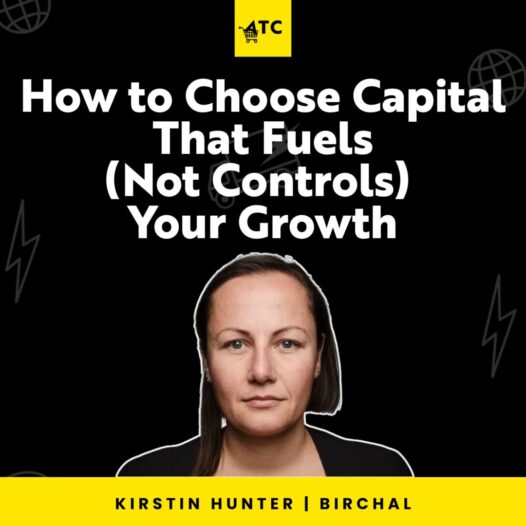Funding growth in ecommerce isn’t just about raising cash: it’s about choosing capital that matches your stage, strategy, and stress tolerance. Whether you’re building momentum with your customers, scaling fast through finance, or playing the long game through profitability, each option comes with its own trade-offs.
The rise of community-led capital
Kirstin Hunter, CEO of Birchal, has seen equity crowdfunding evolve into a serious growth engine for ecommerce brands. “Equity crowdfunding helps you raise capital without giving up control”, she explained, “and it brings your most passionate customers into the investment process to build real momentum.” By turning loyal fans into investors, founders are able to extend the customer relationship into ownership, deepening connection and advocacy in the process.
Birchal’s 2024 report revealed that over $64 million was raised through equity crowdfunding in Australia, with around 35,000 individual investments made. And while participation fell in FY25, the average investment size actually increased (from $1,800 to $2,200) showing investors are backing fewer brands, but with stronger conviction.
Fast money, fast pressure
For founders chasing rapid growth, revenue-based finance (RBF) has become a popular path. Matt Allen from Tractor Ventures and Aidan Corbett from Wayflyer both describe RBF as “tailor-made for scaling ecommerce businesses with proven traction.” You get quick access to capital for essentials like stock or marketing, without giving up equity.
But as Aidan warns, this type of capital only works when your numbers are tight. Investors aren’t buying into your story: they’re betting on your dashboards. If your CAC to LTV ratio is out or your repeat purchase rate is weak, RBF can quickly turn into a treadmill instead of a turbocharger. Fast money comes with fast accountability.
The slow power of bootstrapping
On the other end of the spectrum is bootstrapping: building profitably from within. As Adam Bouris from Who Is Elijah shared, “The power of profitability doesn’t just mean you can take advantage of opportunities; it allows you to pivot.” His team pulled back from 800 wholesalers to focus on D2C, where brand control and high-LTV customers lived.
Bootstrapping gives founders freedom but demands patience. It trades pace for peace of mind. For some, that slower rhythm is a competitive advantage: it allows brands to test, refine, and grow sustainably without external pressure or dilution.
Finding your fit in the funding mix
There’s no universal model for ecommerce funding. Every option, from revenue-based finance to community crowdfunding, comes with trade-offs in control, speed, and stress. The real decision isn’t about which model looks best on paper, but which one aligns with your capacity to manage it.
Choosing your funding path is like setting your car’s gear. You can move fast, steady, or somewhere in between, but only if your systems are ready for the ride.
Systems that attract investment
Whether you’re courting investors or preparing to self-fund, readiness is the common denominator. Justin Ryan from Glow Capital summed it up neatly: “Investors don’t buy into your product, they buy into your systems.” Strong unit economics, transparent dashboards, and scalable processes are what make a business fundable, by a bank, a customer, or a venture fund.
Kirstin’s advice aligns: even if you’re not raising now, build the kind of structure that could withstand investor scrutiny. That way, when opportunity knocks (be it expansion, pre-orders, or community funding) you can open the door fast.
The mindset shift founders need
Funding isn’t just a financial decision, it’s a mindset one. Knowing your numbers keeps your business grounded. Knowing your community keeps your brand human. And knowing your pace keeps your sanity intact.
The best capital doesn’t just inject cash: it amplifies what’s already working. As the ecommerce landscape tightens and investors become choosier, the brands that thrive will be those who treat capital as a partner, not a master.
In this Playbook:
- How Birchal’s Kirstin Hunter helps brands raise capital without giving up control
- Why community-led crowdfunding builds deeper customer loyalty and advocacy
- The pros and cons of revenue-based finance with insights from Tractor Ventures and Wayflyer
- How Who Is Elijah used profitability to pivot and regain brand control
- Why investor readiness starts with clean systems, solid data, and clear unit economics
- How to match your funding pace to your business stage and stress tolerance
🎧 Listen to the full Playbook with Kirstin Hunter from Birchal, now on Add To Cart.
Before you leave…
Join the Add To Cart Community. We’ve got deep dives, events, and practical inspo for ecommerce operators who are playing the long game.



